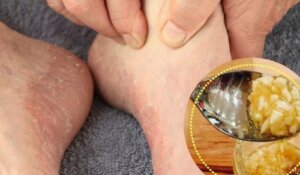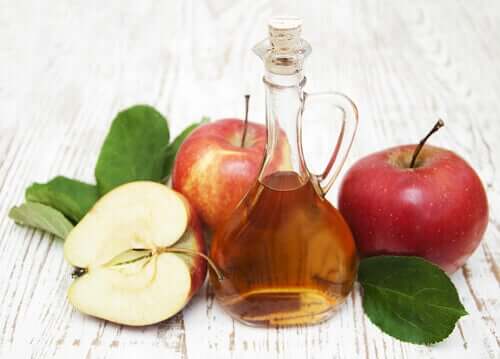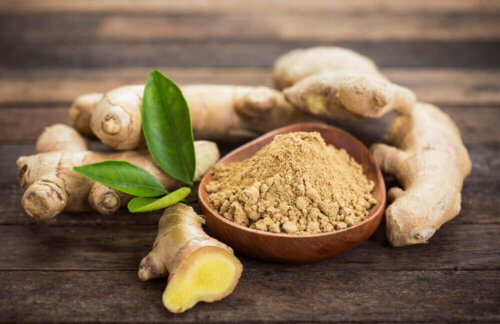Six Natural Remedies for Athlete's Foot Relief


Reviewed and approved by the doctor Maricela Jiménez López
Foot fungus, also known as “athlete’s foot”, is a common infection caused by poor hygiene or insufficient drying. Symptoms of athlete’s foot may appear between the toes and also at the heels and getting athlete’s foot relief might seem impossible.
The duration of the infection can vary, and may even reappear after treatment. However, it’s important to note that an athlete’s foot does not just disappear on its own. It must be treated properly strictly following the indications of the podiatrist or family doctor.
When the fungus spreads and reaches the nails (known as onychomycosis), it can cause discoloration, fatter nails, and, in advanced cases, cause nails to fall off.
It is important to keep in mind that foot fungus is contagious, either through direct contact or as a result of:
- Sharing towels or footwear
- Walking barefoot in a gym or public swimming pool
- Using the shower in these types of facilities
Symptoms of athlete’s foot
Some of the symptoms of athlete’s foot are:
- Cracking skin
- Bad smell
- Inflamed skin
- Burning and itching
- Blisters that can ooze
- Areas with whitish tones
- Changes in the shape of the nails
Check out these Seven Solutions to Prevent Your Shoes from Giving You Blisters
The causes of foot fungus
Athletes and those who wear sneakers throughout the day are at a greater risk of developing athlete’s foot.
This is because fungus in the feet develops more if these extremities are hot and humid. Thus, the risk of infection is greater if you:
- Excessive sweat
- Keep your feet moist for several hours
- Have small nail or foot injuries
- Do sports with inadequate footwear that doesn’t air out and then not carry out a proper foot hygiene
- Wear closed shoes or socks made of materials that don’t absorb perspiration (polyester, among others)
Natural remedies for athlete’s foot relief
You can take advantage of the natural properties found in aloe vera or natural yogurt to get athlete’s foot relief.
Although science has not proven the effectiveness, there are those who use them as adjuvant treatment.
Apple cider vinegar

Ingredients
- 1/2 gal. of water
- 2 c. of apple cider vinegar
Steps
- First, heat the water to a tolerable temperature and add the vinegar
- Then, place your feet in this mixture and leave until water begins to cool down
- Then, dry your feet well with a towel that won’t be shared with another person
Learn about Seven Health Benefits of Green Plantains
Baking soda
As with vinegar, baking soda is also popularly used to combat nail fungus and athlete’s foot.
Interestingly, according to the experts at Medical News Today, there are studies indicating that baking soda has antifungal properties on the skin. Therefore, it could be considered a useful alternative.
Ingredients
- 2 tbsp. of water
- 1 tbsp. of baking soda
Steps
- Mix the water with the baking soda until you get a paste
- Then, rub it on the area affected area and let it sit for a while
- Then, rinse and air dry the area
Ginger tea for athlete’s foot relief

Although it isn’t scientifically proven that this remedy is effective, there are those who use it as an adjuvant treatment against athlete’s foot. To prepare it you only need to follow the following instructions.
Ingredients
- 1 c. of water
- 3 tbsp. of fresh ginger
Steps
- Heat the water. When it begins to boil, add the ginger. Leave the mixture for a few minutes and remove from heat.
- Cover the infusion and let it sit until it cools
- Using a cotton ball, apply to the affected area twice a day
Garlic, almond oil, and broadleaf plantain lotion
Garlic has many beneficial properties for the body. It also is great for fighting fungus and athlete’s foot. Therefore it’s considered that a lotion combined with two other ingredients that have these same properties could be effective.
Ingredients
- 1 garlic clove
- 2 tsp. of fresh broadleaf plantain
- 1 tbsp. of almond oil
Steps
- Combine all the ingredients in a mortar and crush them until you get a paste with a smooth texture
- Apply this paste on the area infected by the fungus and cover with a cotton cloth or tape
- Leave for one hour. Then, wash the area carefully with warm water.
- Finally, dry the area well
Garlic and honey
Garlic and honey is another option to fight athlete’s foot and toenail fungus. This is because both garlic and honey are attributed with anti-bacterial properties.
Ingredients
- 1 clove of garlic, finely chopped
- 1 tbsp. of honey
Steps
- To prepare this remedy, mix garlic and honey in equal parts (the indicated may vary)
- Once you get a paste, apply it on the affected area and let it act for about 20 minutes
A fungal home remedy
One of grandma’s remedies for fungus and athlete’s foot is the following mixture of baking soda, garlic, ground cinnamon and cloves.
Ingredients
- 5 or 6 garlic cloves, peeled
- 1 tsp. of ground cinnamon
- 1/2 c. of water with baking soda
- 1 tsp. of ground cloves
Steps
- Firstly, you’ll need a container or glass jar to mix the ingredients
- Secondly, once all the ingredients have been added, close the container tightly
- Then, let sit for a period of about 15 or 20 days, in a cool and dark place
- It is important to shake the bottle every two days to mix the contents well
- Finally, to apply, pour a little of the mixture onto a gauze or cotton and rub onto the area affected by the fungus
Are there any other remedies for athlete’s foot?
The remedies for athlete’s foot are varied and as it usually happens on these occasions, it’s possible that some work for some people and others don’t. Therefore, the best thing you can do to get rid of foot and athlete’s foot fungus is to consult your doctor.
Furthermore, according to the MSD Manual, treatment for athlete’s foot usually consists of measures to keep the feet dry and the use of topical or oral antifungal drugs.
All cited sources were thoroughly reviewed by our team to ensure their quality, reliability, currency, and validity. The bibliography of this article was considered reliable and of academic or scientific accuracy.
-
Propuestos, P. T. N., & de Té, A. D. Á. Pie de Atleta.
-
Puig, L., & Rull, E. V. (2009). Tiña interdigital de los pies (pie de atleta): su diagnóstico y últimos avances en su tratamiento. Sanidad y Ediciones.
-
Sicilia, M. L., Giménez, J. M., Cuesta, F. S., & Román, M. C. (2006). Clasificación de las infecciones fúngicas. Características microbiológicas de interés clínico. Estudio de resistencia. Infecciones fúngicas superficiales. Medicine-Programa de Formación Médica Continuada Acreditado, 9(57), 3683-3692.
-
Wood, D. Pie de Atleta. In Pie (Vol. 770, pp. 551-9944).
-
Joan Dalmaya, Esther Roéa, Francisca Corella, Xavier García-Navarro, Lluís Puiga. Onicomicosis. Vol. 20. Núm. 10. páginas 62-66 (Noviembre 2006). Dermatólogos. Servicio de Dermatología. Hospital de la Santa Creu i Sant Pau. Barcelona.
This text is provided for informational purposes only and does not replace consultation with a professional. If in doubt, consult your specialist.








